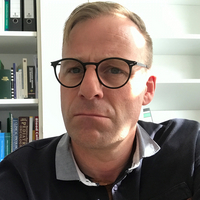University Medical Center (UMC) Mainz
Maria Felicia Basilicata Christian Behl Benedikt Berninger Luciana Berod Tobias Bopp Andreas Daiber Sven Danckwardt Carsten Deppermann Stephan Grabbe Thomas Hofmann Thomas Kindler Daniela Kramer Daniela Krause Dilja Krueger-Burg Michael Kühn Beat Lutz Johannes Mayer Wolfram Ruf Katrin Schäfer Susann Schweiger Natalia Soshnikova Tim Sparwasser Oliver Tüscher Sara Vieira-Silva Ari Waisman Philipp Wild Jennifer Winter Fatemeh Zare-ShahnehDynamics of transcriptome 3’end diversity in development & disease

Diversification of the transcriptome at the 3’end through alternative polyadenylation (APA) evolved as an important and evolutionarily conserved layer of gene regulation. It affects more than 70% of all genes, resulting in transcript isoforms with profoundly different physiological effects, by affecting protein output, production of distinct protein isoforms, or modulating protein localization.
We are interested in disentangling basic mechanisms controlling APA and the resulting fate of RNAs (by NMD, RNA binding proteins and non-coding RNAs), and how this contributes to health and disease. We are applying an integrative approach, including elements of basic research (biochemistry, molecular and cellular biology), modeling of diseases in animals and finally understanding the translational implications in patients. Complemented by novel diagnostic tools such as preclinical (molecular) optical imaging, we are aiming to illuminate such processes on a systems level non-invasively in living subjects. Our goal is to integrate this knowledge into novel therapeutic and diagnostic concepts. Our toolbox involves genetically engineered mouse models, next generation sequencing based techniques (sCLIP, TRENDseq, miTRAP) and large-scale functional RNAi screenings (as example see TREND-DB).
Positions held
- Since 2015: Scientist, German Centre for Cardiovascular Research (DZHK)
- Since 2014: Platform Head, "In Vivo Molecular Imaging", University Medical Center (UMC), Mainz
- Since 2012: Professor, Laboratory Medicine and Center for Thrombosis and Hemostasis (CTH), University Medical Center (UMC), Mainz
- 2011 - 2012: Independent Group Leader, "RNA and Tumor Biology", Martin Luther University Halle-Wittenberg
Education
- 2011: Habilitation and venia legendi, Medical Faculty, University of Heidelberg
- 2002 - 2011: Medical specialisation, University Medicine Heidelberg; Postdoctoral Researcher, European Molecular Biology Laboratory (EMBL), Heidelberg
- 2001: MD (summa cum laude), State Examination, Humboldt-University, Berlin
- 1994 - 2001: Studies of Medicine, University of Tübingen, Berlin (Charite) and San Diego
Selected publications by Sven Danckwardt
Spada S, Luke B and Danckwardt S (2022) The bidirectional link between RNA cleavage and polyadenylation and genome stability: recent insights from a systematic screen. Front Genet, 13:854907 Link
Marini F, Scherzinger D, Danckwardt S (2021) TREND-DB – A transcriptome-wide atlas of the dynamic landscape of alternative polyadenylation. Nucleic Acids Res, 49:D243 Link
Nourse J, Spada S, Danckwardt S (2020) Emerging roles of RNA 3’end cleavage and polyadenylation in pathogenesis, diagnosis and therapy of human disorders. Biomolecules, 10:915 Link
Rogell L, Muth S, Schaupp L, Melchior F, Lienenklaus S, Danckwardt S, …, Schild H*, Diefenbach A* and Probst HC* (2020) Microbiota-induced tonic type I interferons instruct a transcriptional, epigenetic and metabolic program that defines the basal state of dendritic cells. Cell, 181:1080-1096 (*indicates joint contribution) Link
Ogorodnikov A, Levin M, Tattikota S, Tokalov S, Hoque M, Scherzinger D, Marini F, Poetsch A, …, Probst HC, Tian B, Schaefer M, Lackner KJ, Westermann F, Danckwardt S (2018) Transcriptome 3'end organization by PCF11 links alternative polyadenylation to formation and neuronal differentiation of neuroblastoma. Nature Comm, 9:5331 Link